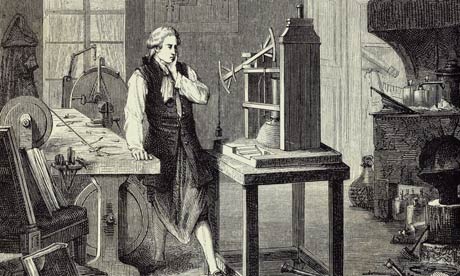
The Tobacco Trade
As reported in the BBC: Much of Scotland’s new-found wealth rested upon the Atlantic trade, particularly in tobacco. Glasgow’s famous Tobacco Lords were some of the great innovators of capitalism and accumulated vast sums of money. They sent agents out to the Chesapeake in Virginia or Carolina to trade with the small plantation owners, to give them credit, and to sell them tools from the Scottish iron and linen industry on credit against their future crop. As the plantations expanded, so did Glasgow’s grip on the trade.
The Tobacco Lords were behind new innovations and systems of crop harvesting. They stored tons of tobacco in warehouses, run by Glasgow agents, so that there was always plenty when a ship arrived for a quick turnaround. These developments and Glasgow’s easier access to transatlantic shipping routes gave the Tobacco Lords important commercial advantages over their southern rivals in Bristol and London.
Scotland and the Atlantic Trade
The Atlantic trade and the Industrial Revolution combined to transform the Scots economy. Trade now turned West towards an ever-expanding America, and tobacco was just part of a global trading system known as the Three Way Trade. Ships sailed from Scotland to Africa to pick up slaves, who were then transported to the sugar plantations of the West Indies or the tobacco plantations of America, from there raw materials like sugar and tobacco were then brought back to Scotland. The wealth of slave-produced goods poured through Glasgow’s banks and quays leaving huge profits which were used to further advance Scotland’s rapid industrialisation.
In 1747 the French Government gave Glasgow a monopoly in the supply of tobacco to France. It brought a glut of money to Scotland’s new banks, such as the Royal Bank, the Thistle Bank and the British Linen Company Bank, who went on to invent new methods of credit, like the overdraft. A paper economy, not unlike the one we know today, was developing for a nation on the brink of industrialisation.

James Watt, the Artisan Inventor
James Watt (1736-1819) was an artisan inventor and producer of mathematical instruments for Glasgow University. After becoming acquainted with Joseph Black’s scientific breakthrough on latent heat capacity, Watt was able to calculate accurately the size of boiler required for a steam engine and how to efficiently transfer energy from steam back into water. He put the theory into practice with an invention which had a dramatic effect on the Scottish economy. Watt didn’t, as is popularly believed, invent the steam engine, which had been around since the early 18th century, but he did invent the Separate Condenser - a simple device which massively increased the power and efficiency of the steam engine. Along with his other improvements to the design of steam engines, he revolutionised industrial production: freeing factories from the requirements of water supply and hugely increasing the power available. Watt’s newly-improved steam engines were also used as powerful water pumps, allowing for the first time in history deep mine shafts to be sunk to exploit coal and mineral reserves below Ayrshire and Lanarkshire. His inventions allowed the expansion of new industries.

New Inventions and New Industries
In 1812 another Scot, Henry Bell (1767-1830), built the Comet: the world’s first successful passenger steamship, which sailed between Glasgow and Greenock and ushered the rise of the Clyde shipbuilding industry. The engine was soon put on wheels, creating the first steam locomotives and the vitally important railway industry.
In the early phase of the Industrial Revolution old industries had been made more efficient, but in the second phase Scotland was now at the cutting edge of new technology. The modern industrial age had arrived. (source: BBC)


No comments:
Post a Comment